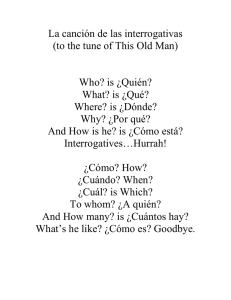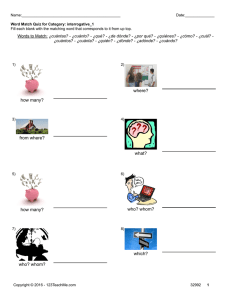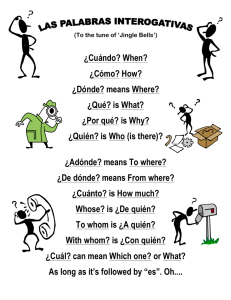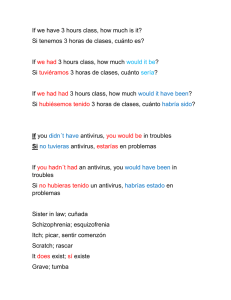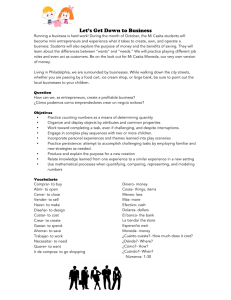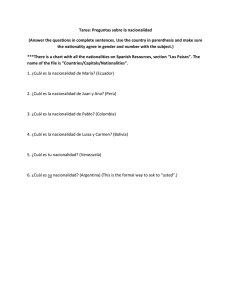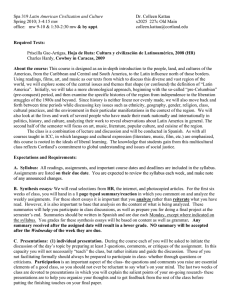Las palabras interrogativas Spanish has three types of questions
Anuncio
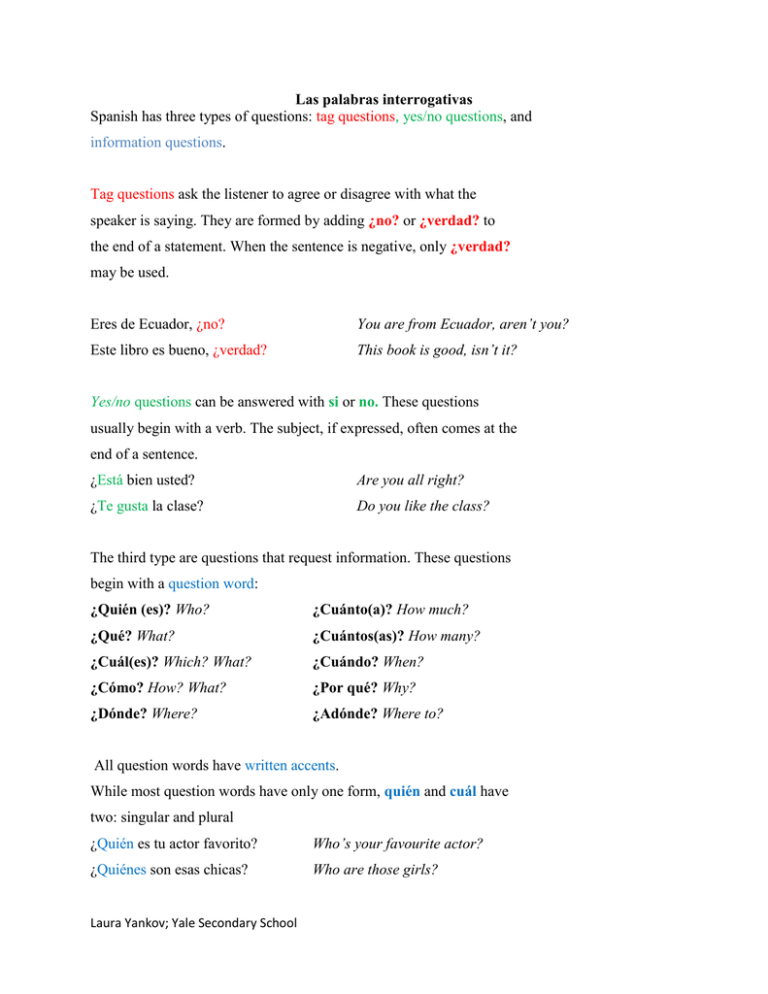
Las palabras interrogativas Spanish has three types of questions: tag questions, yes/no questions, and information questions. Tag questions ask the listener to agree or disagree with what the speaker is saying. They are formed by adding ¿no? or ¿verdad? to the end of a statement. When the sentence is negative, only ¿verdad? may be used. Eres de Ecuador, ¿no? You are from Ecuador, aren’t you? Este libro es bueno, ¿verdad? This book is good, isn’t it? Yes/no questions can be answered with si or no. These questions usually begin with a verb. The subject, if expressed, often comes at the end of a sentence. ¿Está bien usted? Are you all right? ¿Te gusta la clase? Do you like the class? The third type are questions that request information. These questions begin with a question word: ¿Quién (es)? Who? ¿Cuánto(a)? How much? ¿Qué? What? ¿Cuántos(as)? How many? ¿Cuál(es)? Which? What? ¿Cuándo? When? ¿Cómo? How? What? ¿Por qué? Why? ¿Dónde? Where? ¿Adónde? Where to? All question words have written accents. While most question words have only one form, quién and cuál have two: singular and plural ¿Quién es tu actor favorito? Who’s your favourite actor? ¿Quiénes son esas chicas? Who are those girls? Laura Yankov; Yale Secondary School ¿Cuál es tu clase favorita? Which is your favourite class? ¿Cuáles son tus clases favoritas? What are your favourite classes? When cuánto modifies a noun, it must agree in number and gender with that noun. It has four forms: cuánto, cuánta, cuántos, cuántas. ¿Cuánto helado quieres? How much icecream do you want? ¿Cuánta tarea tienes? How much homework do you have? ¿Cuántos estudiantes hay? How many students are there? ¿Cuántas horas estudias? How many hours do you study? When cuánto does not modify a noun, it has only one form ¿Cuánto es? How much is it? ¿Cuánto cuesta? How much does it cost? Qué and cuál correspond to the English word what. They are not always interchangeable: Qué asks for a definition or an explanation: ¿Qué es un mariachi? What is a mariachi? ¿Qué estás haciendo? What are you doing? Cuál asks for a selection: ¿Cuál es la capital de Perú? What is the capital of Peru? ¿Cuál es tu primo? Which (one) is your cousin? ¿Cómo? is used by itself to indicate disbelief or that the listener didn’t hear what was said and wants it repeated. English usually uses What? in these instances. ¿Cómo? ¡Pero sólo tiene catorce años! Laura Yankov; Yale Secondary School What? But he’s only fourteen years old!
